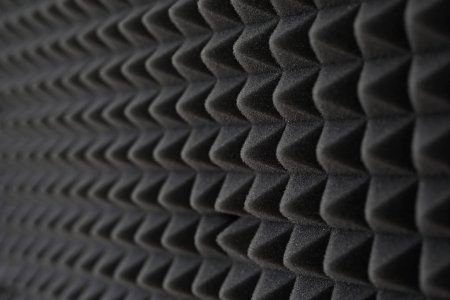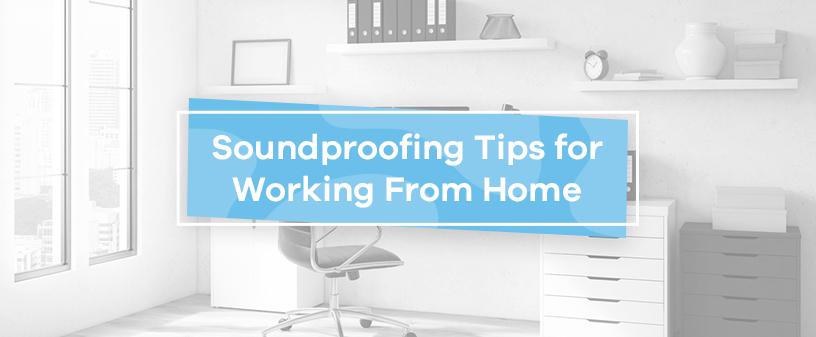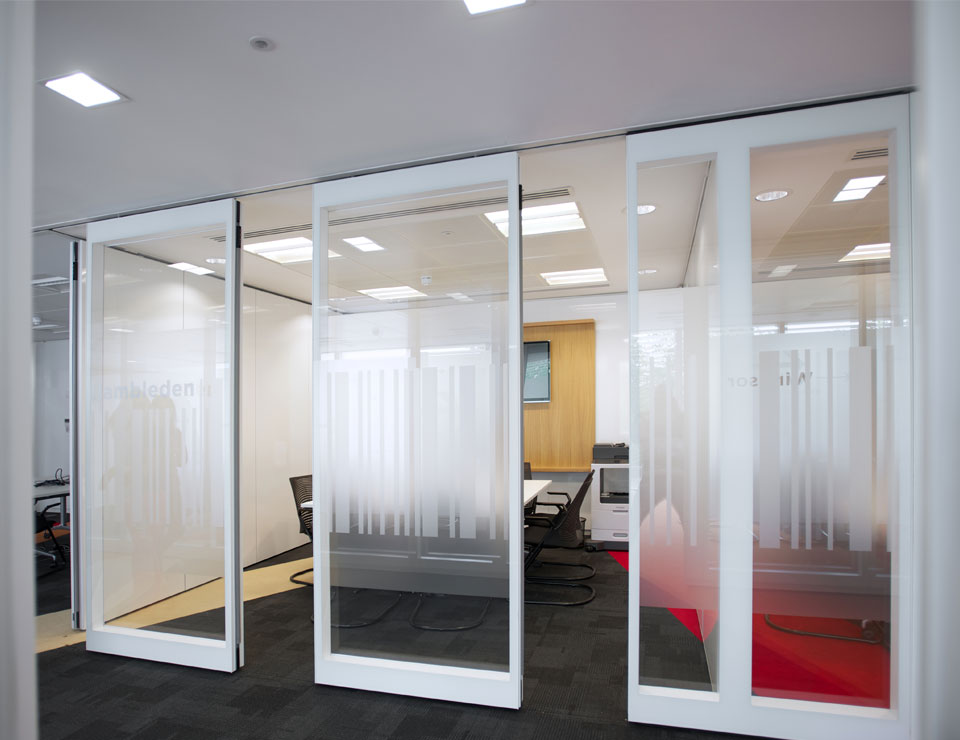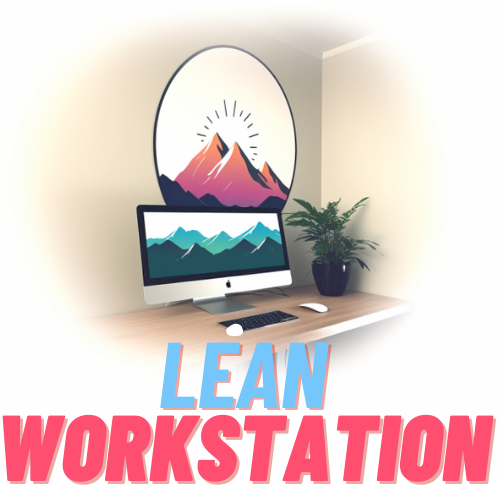
If you’ve ever worked in a bustling office environment, you know how distracting and counterproductive excessive noise can be. But finding a solution that effectively reduces noise without sacrificing style and functionality can be a challenge. That’s why we’re here to introduce you to minimalist solutions for noise reduction in an office. By combining sleek design with innovative technology, these solutions will help create a calm and focused workspace without compromising on aesthetics. Say goodbye to the cacophony of distractions and hello to a more peaceful and productive work environment.

Soundproofing Materials
Acoustic Panels
Acoustic panels are an excellent choice for soundproofing an office space. These panels are specially designed to absorb sound waves and reduce echo, creating a more peaceful and focused work environment. They can be easily installed on walls or ceilings, and they come in various designs and sizes to complement any office decor. Acoustic panels are made from materials such as foam or fabric wrapped around a rigid core, providing both functionality and aesthetic appeal.
Acoustic Foams
Acoustic foams are another popular option for soundproofing an office. These foams are specifically engineered to absorb and dampen sound, minimizing reverberation and echoes in the space. They are lightweight and easy to install, often with adhesive backing that allows for quick application to walls or other surfaces. Acoustic foams come in different shapes, such as wedges or pyramid patterns, and they can be arranged creatively to enhance the overall acoustic performance of the office.
Fabric Wall Panels
Fabric wall panels are a versatile choice for soundproofing in an office. These panels not only absorb sound but also add a touch of elegance to the workspace. Made with acoustic backing and wrapped in high-quality fabric, they effectively reduce noise and provide a visually pleasing backdrop. Fabric wall panels can be mounted on the walls using adhesive or a frame system, allowing for easy installation and rearrangement as needed.
Soundproof Furniture
Acoustic Office Dividers
Acoustic office dividers are an essential addition to any open office design. They help create individual workspaces within a larger area, providing both visual and acoustic privacy. These dividers are typically made with sound-absorbing materials and feature a sturdy construction, ensuring that sound won’t easily penetrate through them. Acoustic office dividers come in various sizes and configurations, allowing you to customize the layout of your workspace while effectively reducing noise distractions.
Soundproof Booths
For tasks requiring extra concentration or confidentiality, soundproof booths offer an ideal solution. These compact enclosures are designed to minimize external noise, giving you a quiet and private space to focus on your work. Equipped with sound-absorbing materials and sometimes even soundproof glass panels, these booths provide an effective barrier against noise disturbances. Soundproof booths are available in different sizes and can be easily integrated into any office layout.
Noise-Canceling Desks
Noise-canceling desks are a cutting-edge innovation in office furniture. These desks are equipped with advanced technology that actively cancels out ambient noise, allowing you to work in a serene environment. Using sensors and microphones, noise-canceling desks analyze the sound waves around them and emit counteractive sound waves to neutralize unwanted noises. With a noise-canceling desk, you can enjoy a focused and distraction-free workspace without the need for additional soundproofing materials.
Workspace Layout
Open Office Design
The open office design has become increasingly popular in modern workplaces due to its collaborative nature and space efficiency. However, the lack of privacy and the potential for noise distractions can be a challenge. To mitigate these issues, consider incorporating soundproofing techniques within the layout. This can involve strategically positioning acoustic panels, dividers, or booths to create designated quiet areas or buffer zones between teams. By thoughtfully integrating soundproofing elements, you can strike a balance between an open and collaborative workspace while providing options for noise reduction.
Activity-Based Working
Activity-based working (ABW) is a flexible workspace concept that promotes different work settings for various tasks. By offering a variety of areas, such as quiet zones, collaboration zones, and social spaces, ABW allows employees to choose the environment that best suits their needs. To support noise reduction in an ABW environment, consider incorporating soundproofing materials or furniture mentioned earlier in the appropriate zones. This provides employees with the freedom to work in a noise-controlled space that enhances their productivity and well-being.
Collaboration Zones
Collaboration zones are essential for fostering teamwork and creativity in the office. However, they can also generate increased noise levels. To address this, design collaboration zones with soundproofing in mind. Utilize acoustic panels, dividers, or even soundproof booths to create designated enclosed spaces where team members can brainstorm and collaborate without disturbing others. By incorporating soundproofing elements into collaboration zones, you ensure that the benefits of teamwork are balanced with an environment conducive to individual focus and minimal noise disruptions.
Personal Noise Reduction
Headphones
Headphones are a simple yet effective tool for personal noise reduction in the office. By wearing noise-canceling or noise-isolating headphones, you can block out external sounds and create a bubble of concentration around you. Noise-canceling headphones use built-in technology to actively eliminate background noise, while noise-isolating headphones use physical barriers to block incoming sounds. Choose the type that suits your preferences and work style, and enjoy a quieter and more focused work experience.
White Noise Machines
White noise machines produce a soothing background sound that helps mask unwanted noises in the office. These machines emit a steady sound that covers up sudden or abrupt sounds, preventing them from becoming distractions. Placing a white noise machine on your desk or in a common area can create a consistent ambient noise level, providing a more peaceful work environment. White noise machines come in various sizes and styles, making them easy to incorporate into any office setting.
Nature Sounds
Incorporating nature sounds into your office environment can have a calming effect and help reduce noise distractions. You can listen to recorded nature sounds, such as ocean waves or forest sounds, through speakers or headphones. Alternatively, consider installing a small indoor fountain or a fish tank to introduce the natural element into your workspace. Nature sounds create a tranquil atmosphere that promotes focus and relaxation, making it easier to concentrate on your work amidst any office noise.
Office Policies and Etiquette
Quiet Hours
Establishing designated quiet hours in the office can greatly contribute to noise reduction. During these specified periods, employees are encouraged to minimize unnecessary conversations, phone calls, or other disruptive activities. Quiet hours provide dedicated time for focused work and allow individuals who require a quieter environment to concentrate without interruptions. Clearly communicate and enforce these policies, ensuring that all employees are aware of the designated quiet hours and respect their colleagues’ need for a quiet workspace.
Designated Meeting Areas
To contain noise from meetings and discussions, it is essential to have designated meeting areas within the office. These areas can be equipped with soundproofing features, such as acoustic panels or dividers, to prevent sound from spreading throughout the workspace. By directing meetings to these designated areas, you can minimize disruptions to those working nearby and maintain a calmer atmosphere. Designating specific meeting areas also helps promote proper meeting etiquette and ensures that noise generated from collaborative discussions is contained within appropriate spaces.
Noise-Free Zones
In addition to quiet hours and designated meeting areas, consider creating noise-free zones within your office. These zones are areas where employees can go to enjoy silence and focus on tasks that require deep concentration. Noise-free zones can be equipped with soundproofing elements, such as acoustic panels or booths, to provide maximum noise reduction. By designating certain areas as noise-free zones, you give employees the option to escape from noise distractions and work in an environment that promotes productivity and mental well-being.
Limiting Office Equipment Noise
Quieter Printers and Photocopiers
Office equipment, such as printers and photocopiers, can often be a source of unwanted noise. Opt for quieter models that are specifically designed to minimize noise disruptions. Look for printers or photocopiers with features like energy-efficient printing modes, sound insulation, or noise reduction technology. Quieter office equipment not only reduces noise pollution but also contributes to a more peaceful and comfortable working environment for everyone.
Soundproof Server Rooms
Server rooms can generate significant noise due to the cooling systems and equipment housed within them. To mitigate the impact of server room noise on the overall office environment, invest in soundproofing measures specifically tailored for server rooms. Utilize materials like acoustic panels, double-glazed doors, or specialized soundproof server cabinets to contain and absorb the noise. Soundproofing the server room not only helps maintain a quieter office but also protects delicate equipment from external sound interference.
Vibration Isolation Pads
Certain office equipment, like air conditioning units or machinery, can produce vibrations that contribute to noise disturbances. By installing vibration isolation pads underneath these items, you can minimize the transmission of vibrations through the floor or walls, ultimately reducing noise levels. Vibration isolation pads are made from materials that absorb and dampen vibrations, preventing them from spreading and becoming audible distractions. Incorporating these pads in the office can greatly contribute to a quieter and more comfortable work environment.

Plant-Based Solutions
Indoor Plants
Indoor plants not only add a touch of nature to your office but also provide natural soundproofing benefits. The foliage and natural fibers of plants help absorb sound waves, reducing echo and noise reflections. Strategically placing indoor plants throughout the office can help create a more acoustically pleasing environment while enhancing aesthetics. Select plants known for their sound-absorbing properties, such as ferns or spider plants, and position them near walls or other surfaces to maximize their impact on noise reduction.
Living Walls
Living walls, also known as vertical gardens or green walls, are an innovative way to integrate nature into your workspace while providing soundproofing benefits. These walls consist of plants grown vertically on a specially designed system that includes irrigation and drainage. Living walls not only enhance air quality and aesthetics but also contribute to reducing noise levels in the office. The plant-covered surfaces act as sound absorbers, reducing echoes and reverberations while creating a visually appealing and tranquil atmosphere.
Green Screens
Green screens are another plant-based solution for noise reduction in the office. These freestanding screens are typically made of greenery, such as tall bushes or shrubs, and can be used to create visually appealing partitions within the workspace. The dense foliage of green screens helps absorb sound waves, acting as a natural sound buffer. By strategically placing green screens in areas where noise is likely to be generated, you can effectively reduce sound propagation and create quieter zones in your office.
Window Treatments
Soundproof Curtains
Soundproof curtains are an excellent option for noise reduction, especially if your office has large windows. These curtains are designed to absorb and block sound waves, preventing them from entering or leaving the office space. Soundproof curtains are typically made with multiple layers of dense fabric, combined with sound-damping materials, to provide maximum noise reduction. Install them near windows or glass walls to minimize exterior noise and create a more serene working environment.
Double Glazing
Double glazing is a window technique that involves the installation of two glass panes with a layer of air or gas in between. This technique effectively reduces noise transmission by creating an extra barrier for sound waves to penetrate. Double glazing can be particularly useful if your office is located in a noisy environment or near busy streets. By implementing double glazing, you can significantly reduce the impact of exterior noise, allowing for a more peaceful and focused working environment.
Window Film
Window film is a cost-effective solution for minimizing exterior noise while still allowing natural light to enter your office. Soundproof window film is designed to dampen sound vibrations, making it an effective noise reduction measure. It can also provide thermal insulation and UV protection, offering additional benefits for your workspace. Easily applied to existing windows, window film is a practical option for those seeking noise reduction without the need for extensive renovations or replacements.

Effective Desk Organization
Desk Dividers
Desk dividers are an efficient way to reduce noise distractions and create individual workspaces within an open office layout. These dividers can be made from sound-absorbing materials or designed with acoustic properties, effectively reducing noise transmission. By placing desk dividers between workstations, you create physical barriers that help contain sound and provide visual privacy. Desk dividers can come in various styles, sizes, and configurations, allowing for customization according to your office’s specific needs.
Acoustic Desk Mats
Acoustic desk mats are an often overlooked solution for noise reduction in the office. These mats provide an additional layer of sound absorption and can help dampen noise caused by typing, writing, or mouse movements. Acoustic desk mats are typically made with materials designed to absorb and deaden sound waves, reducing their transmission to the surrounding environment. By placing an acoustic desk mat on your workspace, you can create a quieter and more comfortable environment, improving focus and productivity.
Cable Management
Keeping cables organized and contained can contribute to noise reduction in the office. Tangled or loose cables can cause vibrations or movements that generate unwanted noise. Implementing proper cable management techniques, such as using cable ties or cable management systems, helps minimize cable-related noise disturbances. By securing cables and keeping them neatly organized, you prevent them from creating unnecessary audible distractions and contribute to a quieter and more organized workspace.
Minimizing Exterior Noise
Sealing Windows and Doors
A significant amount of exterior noise can enter the office through gaps around windows and doors. To minimize this, ensure that all windows and doors are properly sealed. Caulk or weatherstripping can be used to fill any gaps or cracks, preventing sound from infiltrating into the workspace. It is important to inspect the windows and doors regularly, as weather conditions or wear and tear may require resealing. By effectively sealing windows and doors, you can significantly reduce exterior noise and create a quieter working environment.
Weatherstripping
Weatherstripping is a cost-effective method for reducing exterior noise and improving the thermal efficiency of your office. It involves applying a strip of weather-resistant material, such as foam or rubber, to the edges of windows, doors, or other openings. Weatherstripping forms a seal that helps block sound waves, minimizing noise infiltration. It also helps maintain a comfortable indoor temperature by preventing drafts. By implementing weatherstripping throughout your office, you create a more energy-efficient and peaceful workspace.
Exterior Soundproofing
If your office is located in a particularly noisy area, exterior soundproofing measures may be necessary. These can include installing soundproof barriers, such as fences or walls, around the perimeter of the building. Exterior soundproofing materials are designed to absorb or deflect sound waves, preventing them from entering the office space. By integrating exterior soundproofing techniques, you create a quieter buffer zone between the noise outside and the tranquility inside, ensuring a more conducive working environment.
In conclusion, there are various minimalist solutions available for noise reduction in an office. Incorporating soundproofing materials such as acoustic panels, foams, and fabric wall panels can effectively absorb sound and reduce noise distractions. Soundproof furniture, such as acoustic office dividers, soundproof booths, and noise-canceling desks, offers individual privacy and helps isolate noise within specific areas. Strategic workspace layout, personal noise reduction techniques, and office policies can also greatly contribute to a quieter and more productive office environment. By implementing these minimalistic solutions, you can create a harmonious workspace where employees can focus, collaborate, and thrive.

